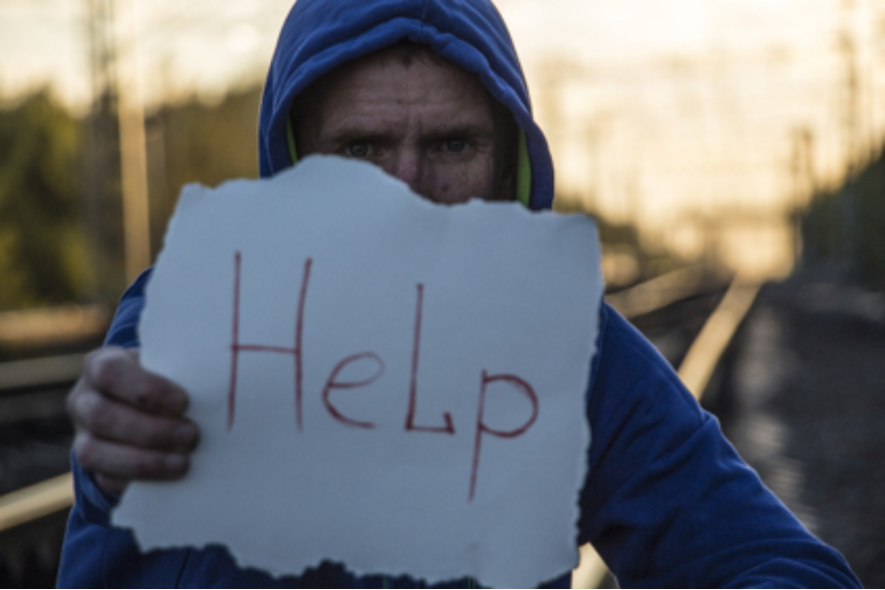
The death of an adolescent by suicide is a tragedy that produces devastating consequences for its family, friends and the community. In these cases, those most closely related with the teenager may wonder if they could have done anything to prevent it. Although it is not always avoidable, a better understanding of the factors that can lead someone to commit such an act can help prevent future cases.
Adolescents are like a rollercoaster of emotions: one day they may be the happiest person in the world while the next day they may feel that nothing makes sense. This is not so uncommon if we consider that adolescence is a crucial stage of our lives, when important changes occur at a biological, psychological and social level. In this transitional stage between childhood and adult life, personal identity is defined and there is an increase in both real and perceived stressors (academic pressures, adapting to the peer group…). With such changes, it is understandable that adolescents sometimes feel lost and experience emotional discomfort. The problem comes when that discomfort makes them consider taking their own lives.
According to the World Health Organization, suicide and suicide attempts are one of the most serious mental health problems amongst people. Even though suicide is relatively rare in children, it increases significantly in adolescents, constituting the third cause of death among 15-19 year olds. Suicide is a complex phenomenon that is usually composed by the following phases:
– Passive suicidal ideation
– Active consideration of one’s own suicide
– Planning and preparing one’s own suicide
– Execution of the suicide attempt
– Consummate suicide
The act of suicide is sometimes seen as a permanent solution to intense emotional, physical and/or mental pain, or to dysfunctional interpersonal relationships. Some of the risk factors associated with suicidal ideation in adolescents are the presence of mental health problems (depression, anxiety, eating disorders…), drug taking, having experienced a stressful event (break-up of a couple, death of a relative), school victimization, partner violence, low family support, etc. Regarding to suicidal behaviour, it is known that some of the most directly related factors are impulsivity, symptoms of hopelessness and/or pessimism, easy access to lethal methods, low family or social support, etc.
Some myths about suicide.
- Asking a person if he/she is thinking of committing suicide may encourage them to do so.
It has been demonstrated that asking and listening to the person about his or her thoughts and emotions, with an empathetic and understanding attitude, can help to relieve his or her tension and reduce the risk of committing the act. It is important to not discuss or minimise what they are thinking and feeling.
- The person who expresses the desire to end his or her life will never do so.
Many people who have attempted suicide have previously expressed their intentions. These expressions should never be considered as simple ways of attracting attention or manipulating others.
- The person who wants to commit suicide does not say so.
Nine out of ten people who attempt suicide have previously communicated their desire to do so. In fact, cases of suicide without prior warning are minimal.
- Only people with serious problems commit suicide.
Suicide often has multiple causes. Many small problems can lead a person to take his or her live. Also, we must take into account that what is unimportant for one person can be catastrophic for another.
- The person who commits suicide wishes to die.
People who think about suicide do not wish to die, but to get rid of circumstances that cause them intolerable suffering, and suicide is the only possible alternative that they see.
All this information raises the question of whether it is good to talk about suicide with an adolescent. The answer would be that, as well as with adults, it is advisable to talk about it from an open and honest perspective so that they can talk about their feelings and thoughts in a safe environment.

How can we help prevent these cases?
First of all, we must be able to detect the warning signs that may make us suspect of a possible suicide idea or attempt.
- Directly verbalize the idea or possibility of committing suicide, with phrases such as “I want to get out of the way”, “life is not worth living”, “what I would like is to die”, “I’d be rather dead than continue to live this way”. It is possible that the verbalizations of some adolescents are less complete so it is essential to pay attention when other subtle ones appear, such as “this will not last long”, “soon I will stop suffering”, “I will stop being a burden”; as well as those comments about himself, the future or life such as “I am not worth anything”, “this life has no meaning”, “I am tired of fighting”, “I want to end it all”, “things will never get better”.
- Often thinks about suicide and can’t stop thinking about it.
- Threatens or tells about suicide to people close to him, what could be understood as a request for help.
- Makes certain preparations related to his disappearance, such as resolving outstanding issues, giving away objects or properties, and calling others to say goodbye.
- Acknowledges feeling lonely, isolated and unable to cope with or face it. Thinks about it constantly and sees no way out of his situation. You may notice that he has feelings of helplessness, depression and especially hopelessness.
- Loses interest in hobbies, obligations, family, friends, and personal appearance and begins to isolate himself personally and socially. For instance, stops going to class, going out on weekends, calling friends, or locks himself in his room more than usual.
- Does risky or self-destructive activities, when he did not do them before.
- His mood gets better suddenly and unexpectedly, at which time he may feel strong enough to carry out his suicide plans.
- A sudden change in his behaviour occurs. For example, a significant increase in irritability, a sudden calm or quiet when previously there has been great agitation, etc.
- Self-injury is observed or reported, regardless its severity.
What to do in case an adolescent presents any of these warning signs?
– In case of immediate danger, call the emergency phone.
– In case of suspicion, try to talk to him or her immediately to determine if there is any idea or risk of a suicide attempt. It is important to talk about it openly, showing your support and not being afraid to use the word “suicide”. A complementary tool that is proving its usefulness is the Prevensuic application, the first suicide prevention application in Spanish. The aim of this application is to detect the risk of suicide and promote preventive measures that can be carried out by the person, its relatives and the professionals who have to deal with the case.
– If we see that the risk persists or we do not know how to deal with the situation, it is advisable to contact mental health professionals as soon as possible.
Aina Fiol Col. Nº B-02615








